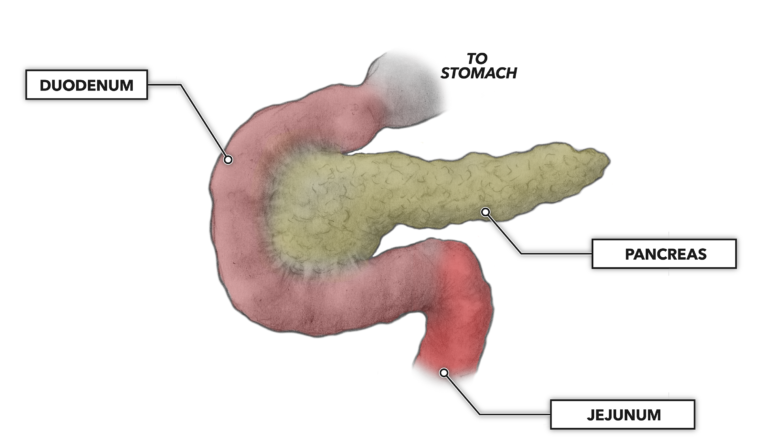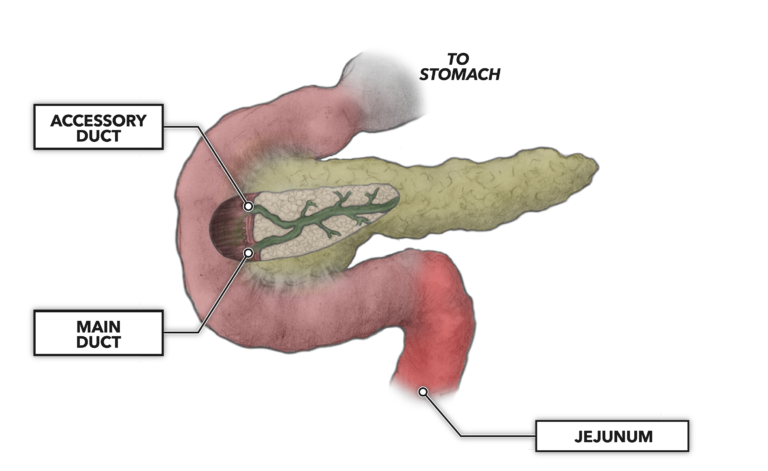The digestive processes within the small intestines are affected by influences outside the anatomical boundaries of the alimentary canal itself. One such influence is the pancreas, which has both exocrine and endocrine roles in digestive and metabolic functions.
Exocrine – a gland that secretes and transports products to the target destination through ducts
Endocrine – a gland that secretes products into the bloodstream for transport to target destinations
The pancreas is located within the abdominal cavity and measures approximately six to 10 inches in length (approximately 15 to 25 cm). Part of the gland’s mass is wedged between the posterior stomach and anterior vertebral column at the level of the pyloric sphincter and within the curvature of the duodenum. A thinner tail traces along the proximal jejunum then angles laterally to the left, inferior to the stomach and terminating near the spleen. It also lies inferior to the liver.

At the widest part of the pancreas, at its medial interface with the duodenum, there are one or two outlet ducts that feed secretions into the small intestine. Most frequently, there is only one duct, the main pancreatic duct. If two are present, the first along the duodenum is the accessory pancreatic duct. The more distal of the two is the main pancreatic duct. Regardless of number, the duct or ducts feed into the duodenum, where the contents from the stomach are received, thereby injecting digestive enzymes into the chyme to break it down further.

The secretions from the pancreas are exocrine and endocrine. The majority of pancreatic tissue, about 95%, is dedicated to exocrine function, specific to the small intestine, via the release of several enzymes:
Trypsin – acts on proteins
Chymotrypsin – acts on proteins
Amylase – acts on carbohydrates
Lipase – acts on lipids
When food enters the stomach, these pancreatic enzyme secretions are released from pancreatic tissue into a system of internal ducts that merge, collect, and culminate in the main pancreatic duct. This main duct penetrates into the duodenum at the same location as the main bile duct, the merger of the common hepatic duct of the liver and the cystic duct from the gallbladder.
A minority of pancreatic function, about 5%, is endocrine in nature. While not directly acting at the small intestine, two important metabolic hormones are produced: insulin, which acts to lower concentrations of glucose in the blood, and glucagon, which acts to increase concentrations of blood glucose.
Related Reading
- The Gastrointestinal System: An Introduction
- The Gastrointestinal System: The Mouth and Tongue
- The Gastrointestinal System: Anatomy of Taste
- The Gastrointestinal System: Swallowing
- The Gastrointestinal System: The Esophagus
- The Gastrointestinal System: Stomach Structure
- The Gastrointestinal System: Stomach Peristalsis
- The Gastrointestinal System: Small Intestine